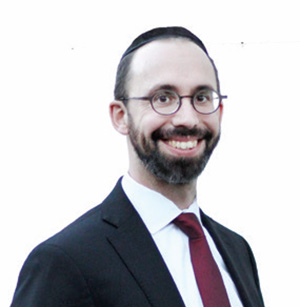
While living in Eretz Yisrael, I was delayed many times due to a chefetz chashud—a suspicious package—but I never got to witness the procedure up close. A friend of mine did. The bomb squad pulled up in a special van. After the area was cordoned off, the back door of the van opened and a special robot was wheeled out. The robot drove toward the suspicious package, pulled the package inside a cavity in its center and then detonated the package. If this was a bomb, the explosion would have occurred inside the robot, thus shielding everyone around. Baruch Hashem, the bag was not a bomb. A half hour later, when the crowd dispersed, all that was left on the floor was the remains of a small pink school bag, which a little girl forgot at the bus stop on her way to school that morning. (Better to err on the side of caution in these instances.)
When the meraglim—spies—whom Moshe sent to scout out the land of Eretz Yisrael returned, they reported that “the land consumes its inhabitants.” (13:32) To their credit, this report was based on real events they had witnessed. They saw that every town they entered was engaged in funeral processions and the townspeople were all distraught with grief. So many people were dying. The meraglim came to the conclusion that the land itself must be deadly. Why else should there be so many deaths? (Gemara Sotah 35a) However, they failed to consider that these deaths were not caused by something inherent in Eretz Yisrael, but rather by the Hand of Hashem, Who arranged all these deaths to preoccupy the inhabitants with their losses, thereby keeping the meraglim undetected.
Harav Yaakov Yisrael Kanievsky, zt”l, (known as the Steipler) proves these deaths were uncommon from the fact that everyone was so distraught. Had they been common, only the immediate families would be distraught. So why did the spies not properly analyze what they were observing?
The answer is a pasuk we recite daily in the last paragraph of Shema. “Do not stray after your heart and eyes” (15:39). There are two components in seeing. The eyes physically view the image and then our brain processes the image. Just how our brain interprets what it sees depends on our hearts. It seems the meraglim had ulterior motives. They were all the heads of their tribes and knew they were going to lose their positions when the Bnei Yisrael moved into Eretz Yisrael. This impending change in status predisposed them toward giving a negative report to prevent them from entering the land. Indeed, the Torah concludes with a warning that we not make the same mistake of explaining circumstances based on our own personal interests.
To see how an event can be viewed differently, in good faith, let’s look at a simple modern-day illustration: a policeman’s body camera. The footage as shown from the body cam of the policeman shows him going toward someone standing in a parking lot looking suspicious. The policeman approaches closely and says, “Sir, what are you doing here?” We then hear screaming and the view jostles violently for a few seconds. We next hear a thud and apparently the policeman is on the floor, as the view is now looking up. We would naturally conclude the person attacked the policeman!
The same scene is then replayed from an outside camera, which shows the view of both the policeman and the individual. Again, the policeman approaches and says, “Sir, what are you doing here?” We then see and hear a woman nearby screaming as her young child is about to step off the sidewalk into heavy traffic. The policeman turns to help and trips, landing on his back. What a different story! The man did not attack the police officer. The view was jostling because the policeman tripped and fell!
It’s all in the eye of the beholder, who interprets that which he sees.
In fact, our human anatomy makes this all so clear! The image our eyes see is really upside down and the brain has to turn it rightside up. If our brain would not invert the image we see, we would literally see the world upside down.
So how do we know if we are interpreting what we see correctly? Rav Dessler points out that we are biased to our own self-interests. However, our friend or neighbor viewing exactly what we see can be objective when it doesn’t concern him. As the Mishnah in Pirkei Avos implies, it’s crucial to have a rav and a friend to keep us on the right path and help our eyes see that which is really there.
By Rabbi Baruch Bodenheim
Rabbi Baruch Bodenheim is the associate rosh yeshiva of Passaic Torah Institute (PTI)/Yeshiva Ner Boruch. He initiated and continues to lead a full multi-level gemara learning program, gives halacha and hashkafah shiurim on Shabbat and, offers a weekly Beis Medrash program with in-depth chavrusa learning in both Livingston and Springfield.








